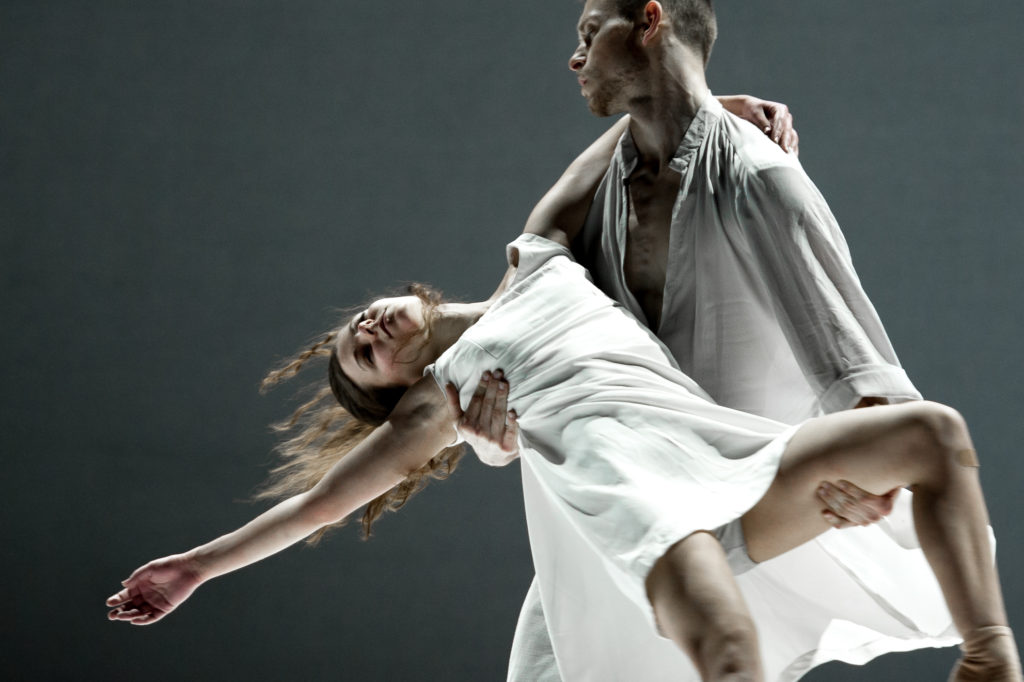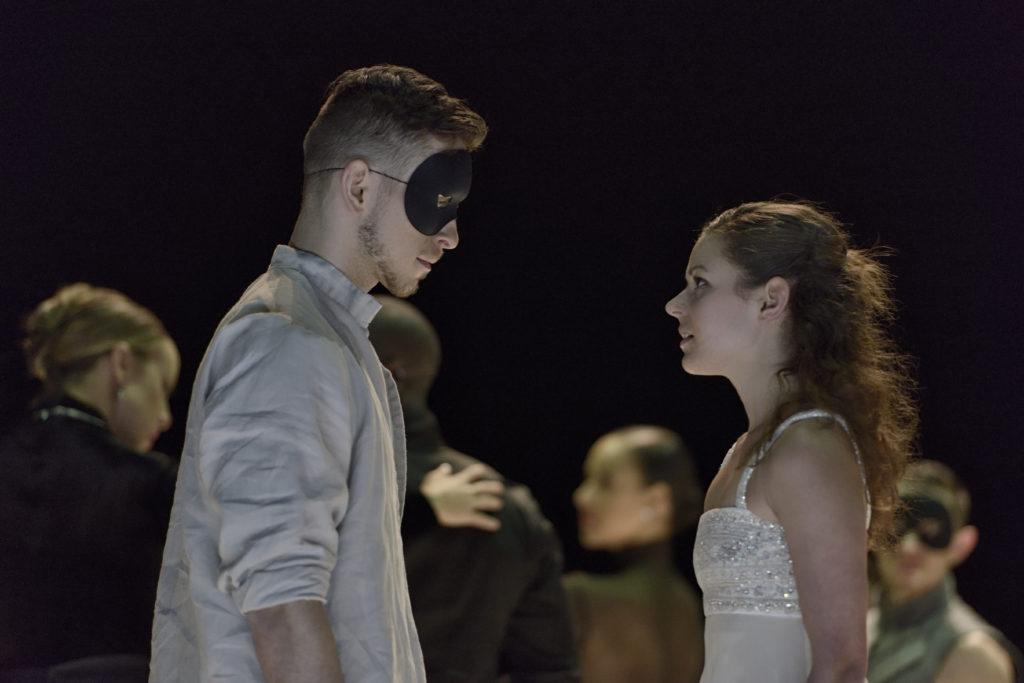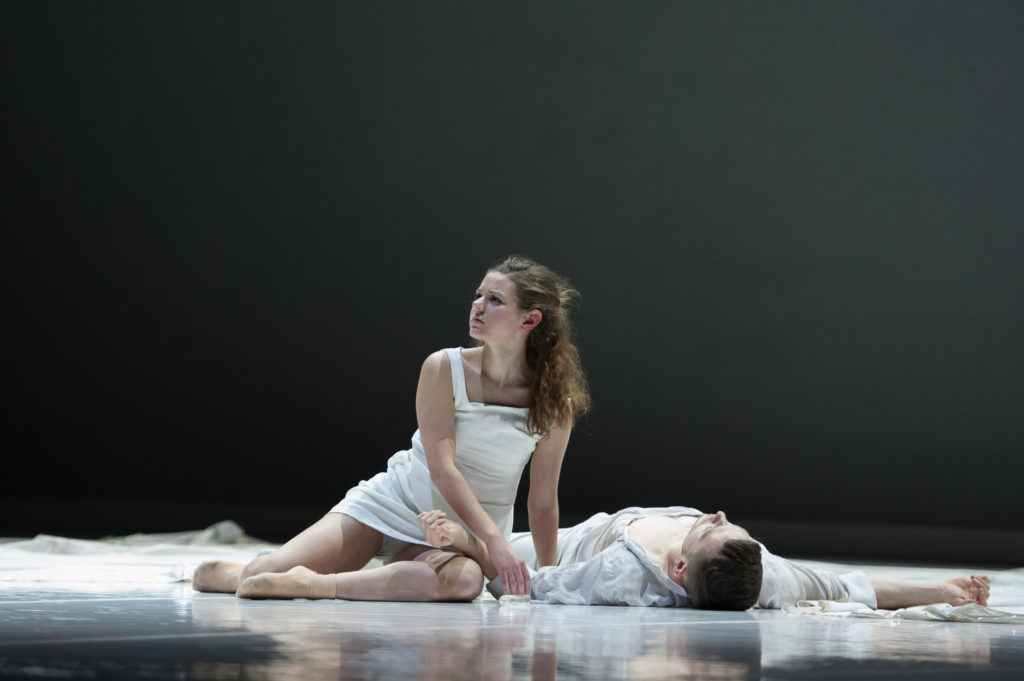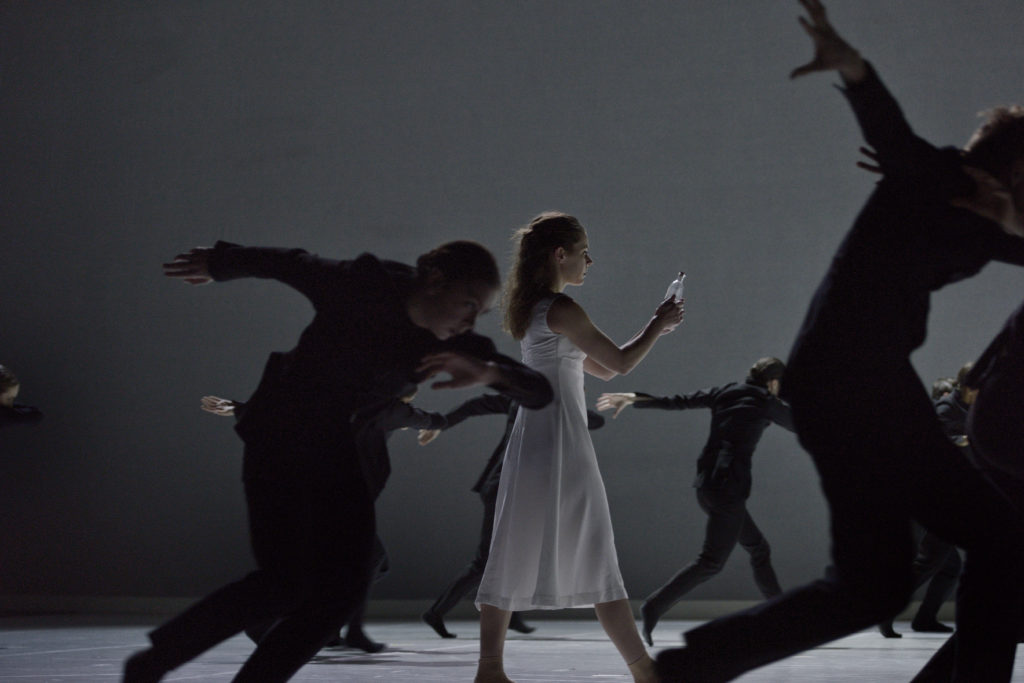 Ballet BC have never disappointed me and their latest creation, “Romeo + Juliet” is no exception. It’s an interesting premise, taking a classical tale, in fact, one of the most well known in the western literary canon, and a much beloved classical score, and using these as a template for a contemporary dance piece.
Ballet BC have never disappointed me and their latest creation, “Romeo + Juliet” is no exception. It’s an interesting premise, taking a classical tale, in fact, one of the most well known in the western literary canon, and a much beloved classical score, and using these as a template for a contemporary dance piece.
With Choreographer Medhi Walerski, Ballet BC have taken on this challenge. They’ve remained faithful to the narrative and traditional scene structure, with Prokofiev’s spellbinding score. However, the visual impact on stage is anything but traditional. Employed is a monochromatic and austere staging, with a free imagining of how movement can express human interaction.
The costumes and stage set, (conceptually designed by Walerski) are purposely timeless, that is to say, are of no particular period or place. The costumes echo motifs of Shakespearean dress; the doublet, cinched in waists, high collars, but it’s as if they are seen through a bleak cold-war filter, creating simple, and striking silhouettes. The stage setting too is reductive, which enabled metaphor. Three 12′ (give or take) hollow rectangles invite activity through and on top of them in inventive ways.They are maneuvered around on stage, proving just as much an integral part of the collective movement as the dancers themselves. These abstract forms in themselves aren’t directly reminiscent of anything but strategically placed, they become a balcony (of course), or a fireplace or a doorway.This non-figurative aesthetic frees the audience of much preconceived baggage, allowing them, so the theory goes, to see the essence of the story and its human plight.

As with everything Ballet BC seems to touch, the choreography and performances were entirely engrossing, particularly admirable as this is a “feature” length piece. “Romeo + Juliet” was one of those performances where you can see how dance and movement can express raw, unabated emotion. It was mesmerising to watch how actions, such as fighting, love making, even tomfoolery (thank you, Mercutio and Benvolio), could be so overtly expressed without their literal replication.
At the infamous Capulet ball, we see a hypnotic melange of grandiose, courtly gestures, all grotesque voiceless laughing faces, framing the delicate and tender sincerity of Romeo and Juliet’s first meeting. In later scenes, we see our star-crossed lovers over-wrought with emotion, at turns giddy with bent up excitement then limp with anticipation. Also particularly powerful is Mercutio’s hallucinogenic drift from life, his friends become mocking demons, shunning his attempts for comfort. These emotion-laden scenes were magnetic, conceived and performed with such grace, sincerity and aplomb.
Another unexpected delight of the performance was that it helped me experience nuances and textures of Prokofiev’s music that I had never noticed before, be that the slightly sinister overtones of the otherwise joyful melody of the lover’s scenes, (a premonition of their ill-fated future) or the comforting lilt in the score that seems to accompany Juliet’s nurse.

There’s such a tricky balance to strike, with dramatised ballet, between plot and choreography. Get the balance wrong and the piece will be peppered with empathic gesturing as the dancers desperately try to mime out critical plot lines, seeming more like a drunken game of Christmas charades than a beautiful piece of performance art. In the most part, “Romeo + Juliet” struck the balance very well between mimed storytelling and conceptual expression. The second act seemed however, less effortless than the first, perhaps because it was more plot-centric. In fact, the final scenes, which were almost all acting, were some of the weakest for me.

Walerski stated that this was his first “story” ballet. Based on what we saw tonight, I have my fingers crossed that he’ll do more. “Romeo + Juliet” was a story told with exceptional panache and elegance.
You can buy tickets for tonight here!
– MG
